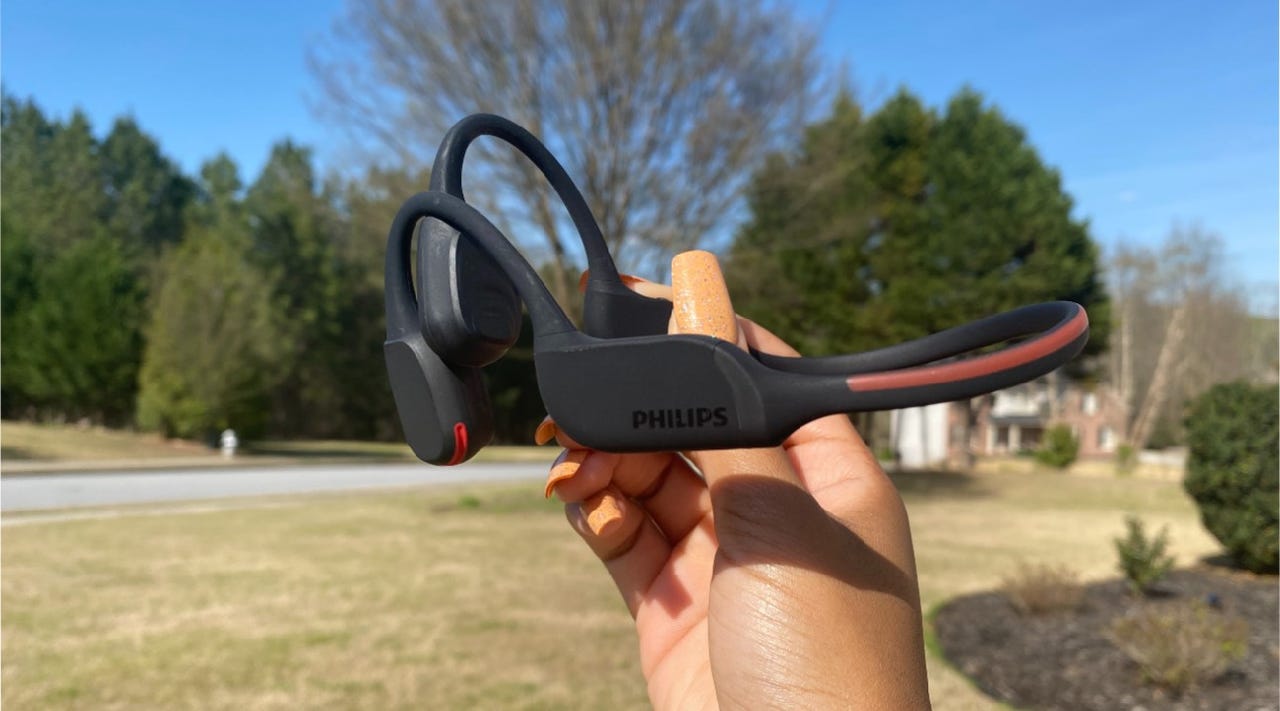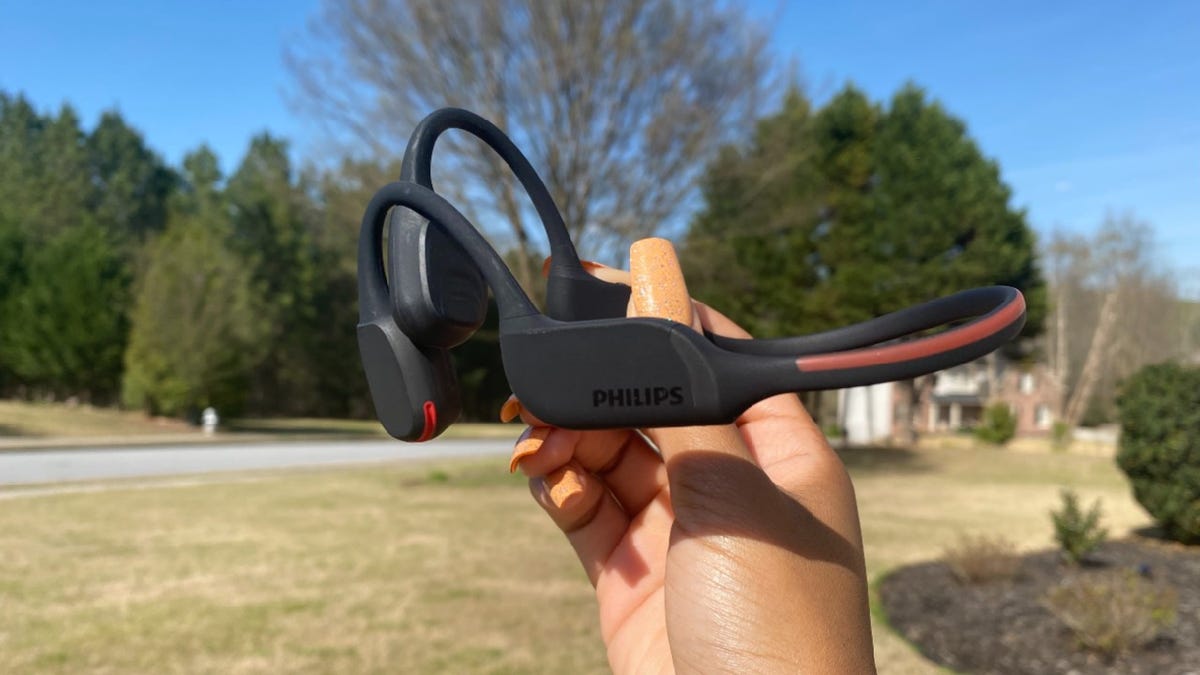Why these bone conduction headphones are my go-to for outdoor listening

For many, a pair of headphones is an everyday essential. But not all headphones are ideal for carrying around wherever, whenever. For example, I love my Beats Solo 3 for when I’m working or having an intimate music session. My AirPods Pro are perfect for FaceTime and phone calls. But both pairs of headphones give me cause for concern when I’m listening to music while walking outside.
Also: I sweat so much it damages earbuds. Here’s what I run with now instead
I occasionally go on walks at a local trail and, as a woman walking alone with headphones on, am constantly looking over my shoulder because I can’t hear my surroundings.
Even when I have my AirPods on Transparency mode, I still feel uneasy about blocking my ear canal and muffling surrounding sounds. So, I recently switched to open-ear, bone conduction headphones. Specifically, the Philips Go A7607.
ZDNET RECOMMENDS
Philips Go A7607
Comfortable, open-ear headphones that deliver fantastic audio quality.
The way these headphones work is simple: You hook them around your ears and the band lays against the back of your head. With all that support, they’re incredibly lightweight and comfortable and don’t fatigue my ears after an hour or two of wear. If you’re like me and wearing on-ear headphones agitates your ear piercings, the Philips Go A7607 is a great solution.
Also: Best bone conduction headphones (and how they work)
When running or jogging, the headphones stay comfortably in place, so I don’t have to keep adjusting them like how I would with my Beats or AirPods. More importantly, they don’t slip from behind my ears after sweating in the warm and humid Georgia weather.
If you’re on a run or walk after sunset, you can even set a bright red LED light to stay on or blink fast so you’re visible to cars and other pedestrians. This was another safety feature that I really enjoyed having with these headphones.
Also: These $150 transparent earbuds offer audiophiles something AirPods Pro don’t
When it comes to the actual audio quality of the Philips Go, there are some notable tradeoffs that you can expect — as will be the case with any open-ear, bone conduction headphones. While the wearable gets plenty loud, and I had no problems grooving to the tracks both indoors and outdoors, they’re not as fulfilling when reproducing background vocals and instruments. Remember, these headphones aren’t digging into your ears like how earbuds and in-ear versions would.
A look at the Philips Headphones app. Screenshot by Jada Jones/ZDNET
Still, I enjoyed how the bone conduction technology helped me feel the music I was listening to, vibrating the bass frequencies off of my facial structure. As intense as that sounds, it’s not, and I was pleased to find that the Philips Go headphones didn’t place too much pressure around or behind my ears.
Also: The 5 best earbuds you can buy
Controlling the audio levels and modes of the Philips Go requires taps and presses along the sides of the headphones, though I much preferred the ease (and lack of memorizing gestures) of using the Philips Headphones app. The app also shows you the headphone’s battery life, music controls, and microphone settings.
At $200, the Philips Go A7606 is steep in price, but I’d argue it’s worth it when you factor in its durability, safety features, and functionality. If you’re looking for a pair of headphones you can wear at work and take straight to the gym, all while staying aware of your surroundings, these are the ones I’d recommend.




